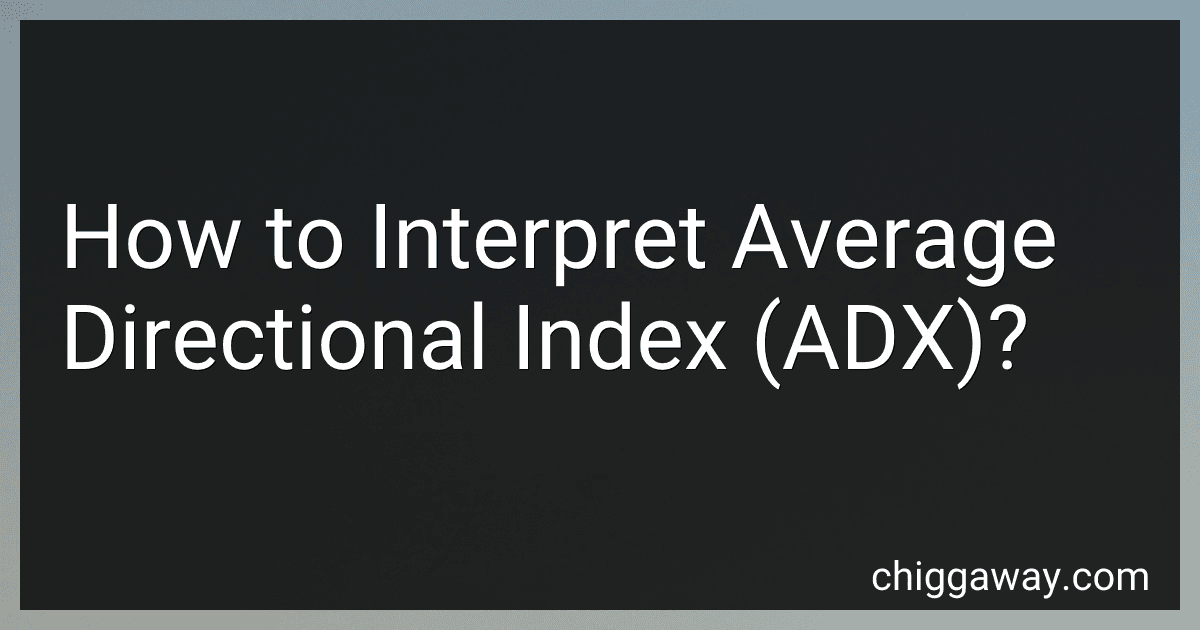Posts (page 14)
-
 8 min readThe Ichimoku Cloud is a popular technical analysis tool used by traders and investors to identify potential buy and sell signals in the financial markets. Developed by Japanese journalist Goichi Hosoda in the late 1960s, it is also known as the Ichimoku Kinko Hyo, which translates to "one glance equilibrium chart."The Ichimoku Cloud consists of several components that work together to provide a comprehensive view of price action and potential support and resistance levels.
8 min readThe Ichimoku Cloud is a popular technical analysis tool used by traders and investors to identify potential buy and sell signals in the financial markets. Developed by Japanese journalist Goichi Hosoda in the late 1960s, it is also known as the Ichimoku Kinko Hyo, which translates to "one glance equilibrium chart."The Ichimoku Cloud consists of several components that work together to provide a comprehensive view of price action and potential support and resistance levels.
-
 12 min readOn-Balance Volume (OBV) is a technical analysis indicator that measures the volume of an asset's trading in relation to its price movements. It was developed by Joseph Granville and introduced in his 1963 book, “Granville's New Key to Stock Market Profits.”The concept behind OBV is simple: it assumes that volume precedes price movement. The indicator focuses on the cumulative volume of an asset, adding or subtracting the volume from a running total based on price changes.
12 min readOn-Balance Volume (OBV) is a technical analysis indicator that measures the volume of an asset's trading in relation to its price movements. It was developed by Joseph Granville and introduced in his 1963 book, “Granville's New Key to Stock Market Profits.”The concept behind OBV is simple: it assumes that volume precedes price movement. The indicator focuses on the cumulative volume of an asset, adding or subtracting the volume from a running total based on price changes.
-
 11 min readBollinger Bands are a popular technical analysis tool that was developed by John Bollinger in the 1980s. They consist of a set of three lines plotted on a price chart: a simple moving average (SMA) line in the middle, and an upper and lower band that represent a certain number of standard deviations away from the SMA.The middle band is usually a 20-day simple moving average (SMA), although traders can adjust this timeframe to suit their preferences.
11 min readBollinger Bands are a popular technical analysis tool that was developed by John Bollinger in the 1980s. They consist of a set of three lines plotted on a price chart: a simple moving average (SMA) line in the middle, and an upper and lower band that represent a certain number of standard deviations away from the SMA.The middle band is usually a 20-day simple moving average (SMA), although traders can adjust this timeframe to suit their preferences.
-
 10 min readBollinger Bands are a technical analysis tool that can be used by traders, including beginners, to analyze price volatility and identify potential trading opportunities. Developed by John Bollinger in the 1980s, Bollinger Bands consist of a moving average line with an upper band and a lower band.To use Bollinger Bands as a beginner, you need to understand the three components: the moving average line, the upper band, and the lower band.
10 min readBollinger Bands are a technical analysis tool that can be used by traders, including beginners, to analyze price volatility and identify potential trading opportunities. Developed by John Bollinger in the 1980s, Bollinger Bands consist of a moving average line with an upper band and a lower band.To use Bollinger Bands as a beginner, you need to understand the three components: the moving average line, the upper band, and the lower band.
-
 9 min readThe Average Directional Index (ADX) is a technical indicator used to determine the strength and trendiness of a market. It assists traders in assessing whether a security is trending or not, as well as the strength of the trend.The ADX is made up of three lines: the ADX line itself, the Positive Directional Indicator (+DI), and the Negative Directional Indicator (-DI). These lines are plotted on a scale ranging from 0 to 100.The ADX line shows the strength of the trend.
9 min readThe Average Directional Index (ADX) is a technical indicator used to determine the strength and trendiness of a market. It assists traders in assessing whether a security is trending or not, as well as the strength of the trend.The ADX is made up of three lines: the ADX line itself, the Positive Directional Indicator (+DI), and the Negative Directional Indicator (-DI). These lines are plotted on a scale ranging from 0 to 100.The ADX line shows the strength of the trend.
-
 7 min readThe Elder-Ray Index is a technical analysis tool developed by Dr. Alexander Elder. It consists of two components: the Bear Power and the Bull Power. These measures are designed to help swing traders identify buying and selling opportunities in the market.The Bear Power is calculated by subtracting the Exponential Moving Average (EMA) of the close price from the EMA of the high price. It measures the strength of the bears in the market.
7 min readThe Elder-Ray Index is a technical analysis tool developed by Dr. Alexander Elder. It consists of two components: the Bear Power and the Bull Power. These measures are designed to help swing traders identify buying and selling opportunities in the market.The Bear Power is calculated by subtracting the Exponential Moving Average (EMA) of the close price from the EMA of the high price. It measures the strength of the bears in the market.
-
 7 min readMoving Min is a calculation used in statistics and data analysis to identify the minimum value over a specified interval or window. It involves analyzing a dataset or a sequence of data points and calculating the minimum value within a moving window.To calculate the moving minimum, a window size is determined, which represents the number of data points or units of time to be considered at once.
7 min readMoving Min is a calculation used in statistics and data analysis to identify the minimum value over a specified interval or window. It involves analyzing a dataset or a sequence of data points and calculating the minimum value within a moving window.To calculate the moving minimum, a window size is determined, which represents the number of data points or units of time to be considered at once.
-
 6 min readTypical price refers to the average or usual cost of a product or service. It is the price that most customers would expect to pay based on market trends and consumer preferences.The typical price is determined by various factors such as production costs, competition, demand, and supply. Companies consider these factors to set a price that is both profitable for them and acceptable to customers.
6 min readTypical price refers to the average or usual cost of a product or service. It is the price that most customers would expect to pay based on market trends and consumer preferences.The typical price is determined by various factors such as production costs, competition, demand, and supply. Companies consider these factors to set a price that is both profitable for them and acceptable to customers.
-
 13 min readChandelier Exit is a technical indicator designed by Chuck LeBeau. It helps traders to determine when to exit a trade. It is particularly useful for scalping, a trading strategy that involves making quick trades to capture small price movements.To interpret the Chandelier Exit for scalping, you need to understand its basic concept. The indicator consists of three main components: a trailing stop, an exponential moving average (EMA), and a multiple value.
13 min readChandelier Exit is a technical indicator designed by Chuck LeBeau. It helps traders to determine when to exit a trade. It is particularly useful for scalping, a trading strategy that involves making quick trades to capture small price movements.To interpret the Chandelier Exit for scalping, you need to understand its basic concept. The indicator consists of three main components: a trailing stop, an exponential moving average (EMA), and a multiple value.
-
 8 min readThe Elder-Ray Index is a technical analysis tool that helps traders and investors assess the strength of price movements in financial markets. It was developed by Alexander Elder and consists of two components: the Bull Power and the Bear Power.Bull Power: This component of the Elder-Ray Index measures the strength of bulls (buyers) in the market. It is calculated by subtracting the 13-day exponential moving average (EMA) of the daily low prices from the current closing price.
8 min readThe Elder-Ray Index is a technical analysis tool that helps traders and investors assess the strength of price movements in financial markets. It was developed by Alexander Elder and consists of two components: the Bull Power and the Bear Power.Bull Power: This component of the Elder-Ray Index measures the strength of bulls (buyers) in the market. It is calculated by subtracting the 13-day exponential moving average (EMA) of the daily low prices from the current closing price.
-
 8 min readAcceleration bands are a technical analysis tool that can be used by day traders to identify potential trade setups and make better trading decisions. They are similar to Bollinger Bands, but with a few key differences.The concept behind acceleration bands is based on the idea that trends tend to accelerate before they reach a turning point. The bands are plotted around a moving average, usually the 20-day simple moving average, with an upper and lower band.
8 min readAcceleration bands are a technical analysis tool that can be used by day traders to identify potential trade setups and make better trading decisions. They are similar to Bollinger Bands, but with a few key differences.The concept behind acceleration bands is based on the idea that trends tend to accelerate before they reach a turning point. The bands are plotted around a moving average, usually the 20-day simple moving average, with an upper and lower band.
-
 11 min readThe Money Flow Index (MFI) is a technical indicator used in day trading to measure the strength and direction of money flowing into or out of a particular asset. It combines both price and volume data to provide traders with insight into the market sentiment and potential reversal points.
11 min readThe Money Flow Index (MFI) is a technical indicator used in day trading to measure the strength and direction of money flowing into or out of a particular asset. It combines both price and volume data to provide traders with insight into the market sentiment and potential reversal points.